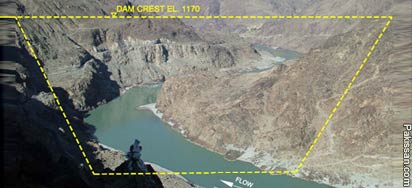|
Farmlands inundated by flood waters
|
HOME
|
By Mohammad Hussain Khan
 MORE
areas in Dadu and Jamshoro districts inundated by floodwater
will make it impossible for growers to sow crops in the
coming Rabi season. The entire right bank area is expected
to make nominal contribution to the Rabi crop. MORE
areas in Dadu and Jamshoro districts inundated by floodwater
will make it impossible for growers to sow crops in the
coming Rabi season. The entire right bank area is expected
to make nominal contribution to the Rabi crop.
The government is still going through early recovery
programme for flood-hit farmers, and still assessing the
damages. But official sources say some incentives like
subsidy on farm inputs are being planned for growers.
Water will take some time to recede from farmlands and then
growers will need time to prepare or level their lands for
the Kharif season next year, provided the government
announces the required subsidies. Agriculture department
officials say only 60 per cent area in Larkana district and
20 per cent in Shikarpur district have remained safe while
the rest has been inundated.
Last year, wheat was cultivated on 2.7 million acres because
of an attractive support price of Rs950 per 40kg. Growers in
Jacobabad, Kashmore, Qambar-Shahdadkot, Larkana districts,
who used to produce gram, got interested in growing wheat.
Even katcha area has been producing wheat, sugarcane, cotton
and paddy.
The wheat sowing target has not been fixed as yet. Rabi
season in Sindh commences from November 1 and according to
an agriculture department official, the sowing continues as
late as January 10 in lower Sindh. Government seems to be
planning to focus on wheat cultivation in areas which
remained unaffected on the left bank, barring Thatta
district..
The Sindh Abadgar Board (SAB) president Abdul Majeed
Nizamani observes that in view of the present situation,
sunflower cultivation seems to be the only option for
growers and the government should also capitalise on it.
Sunflower crop can be sown as late as February in upper
Sindh which remained unaffected and where water is receding.
“We can save our import bill by producing edible oil through
sunflower production on 1.5 million acres. It is currently
grown on 500,000 acres,” he says.
Nizamani estimates that government can save on an import
bill of Rs85 billion by investing Rs12 billion on subsidy on
inputs like DAP, urea, seed and Rs3,000 for land preparation
per acre.
Sindh Chamber of Agriculture president Dr Nadeem Qamar is
hopeful about wheat cultivation on the left bank, provided
irrigation department officials work effectively to provide
water on time. He, however, sees no chances of Rabi crop on
Indus right bank area. “The area is completely devastated by
floods. I see no future for Rabi crop for our right bank
counterparts,” he said.
According to Senior Member, Board of Revenue, Syed Ghulam
Ali Shah Pasha, the main problem is that upper Sindh area
doesn’t have any drainage system which can make water
recede. “Water table in these areas is already high. I don’t
see chances for Rabi crop there,” he says. Growers need to
make their land cultivable first for which the government is
committed to support them, he remarks.
Upper Sindh growers have late sowing patterns as compared to
lower Sindh region for Rabi. Area that is normally brought
under cultivation for wheat in Dadu and Jamshoro districts
is currently bearing the brunt of floodwater due to breaches
in the Main Nara Valley Drain (MNVD) and Manchar Lake.
The farm labourers have also suffered badly due to flood.
Displaced, they are staying in relief camps in different
cities. They have to return first to their native towns for
their landowners to start cultivation.
The irrigation system also stands damaged in upper and lower
Sindh by floodwaters. Performance of irrigation department
has never been impressive. While a quarter of population of
Sindh was affected by flood, a big population of growers
kept demanding availability of water for their Kharif crop.
Two persons are reported to have committed suicide in upper
Sindh due to non-availability of water for their crops.
Growers’ protests still continue in areas of left bank in
Sindh for supply of irrigation water.
Courtesy: The DAWN
|
Pakissan.com;
|